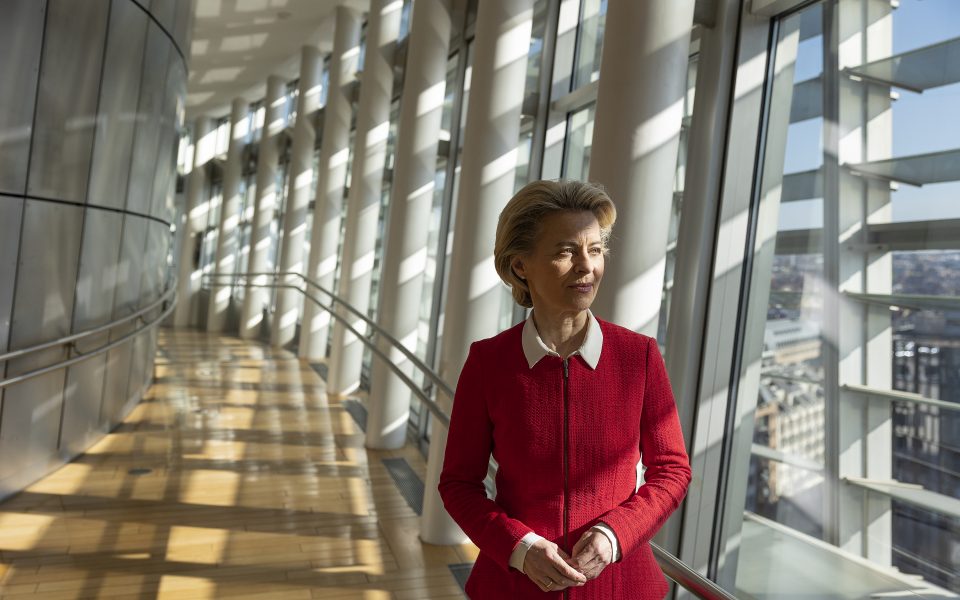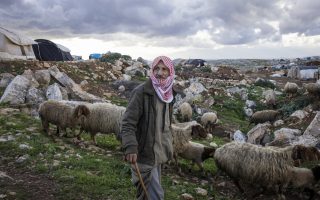How Europe sealed a Pfizer vaccine deal with texts and calls

It was February and things were going from bad to worse for the European Union’s vaccination campaign, and for its top executive, Ursula von der Leyen.
Much of Europe was in lockdown, people were dying, and the bloc was running low on doses of vaccines after its biggest supplier, AstraZeneca, announced production problems. Critics inside and outside the European Union questioned von der Leyen’s leadership and accused her of mishandling the crisis.
It was at that low point that she caught a break.
For a month, von der Leyen had been exchanging texts and calls with Albert Bourla, the chief executive of Pfizer, another vaccine supplier to the bloc. And as they spoke, two things became clear: Pfizer might have more doses it could offer the bloc – many more. And the European Union would be thrilled to have them.
That personal diplomacy played a big role in a deal, to be finalized this week, in which the European Union will lock in 1.8 billion doses from Pfizer, which, with its smaller German partner, BioNTech, made the first Covid-19 vaccine to get regulatory approval in the European Union.
The new contract will include a 900-million-dose order through 2023, with an option for another 900 million, von der Leyen said in an interview.
“I am convinced that we are in this for the long haul,” she said.
The deal will establish the European Union as Pfizer’s biggest single client by far; the company has so far sold 300 million doses to the United States. The contract will permit the European Union to resell or donate the vaccines to partners, empowering it to conduct vaccine diplomacy and support struggling efforts to immunize people in poorer countries.
Von der Leyen and Bourla first connected in January, when the pharmaceutical boss had to explain why his company had to cut vaccine supplies temporarily while it upgraded manufacturing facilities in Belgium. In November, the European Union signed an initial deal with the company for 200 million doses, with the option to add 100 million.
As the improvements at the Belgium plant moved along with relative ease, the discussions between the EU leader and the pharmaceutical chief continued, both recounted in interviews with The New York Times.
As they talked, the pandemic was raging across Europe, and Pfizer and BioNTech were hard at work trying to step up production. To increase the companies’ production capacity even further, the chief commercial officer at BioNTech, Sean Marett, was lining up regulatory approval for a newly acquired plant in Germany, which was already producing vaccines and stockpiling them in anticipation of getting a green light.
By the end of March, when the plant got its authorization, it had already produced 11 million doses, which were soon directed to the European Union.
The calls resulted in a string of deals between the European Union and the companies. On Feb. 17, the bloc announced an order for another 200 million shots. On April 19, it activated an option to get yet another 100 million.
Accounts of how the deals came about, related by von der Leyen, Bourla, Marett and nine other officials and experts involved, reveal a striking alignment of political survival and corporate hustle.
In her interview, von der Leyen played down the political pressures she had faced and said she had been confident things would improve.
“I knew that the upscaling of the deliveries would have a slow start by nature in the beginning, and, therefore, I also knew the first quarter was going to be tough,” she said. But, she added, “I did not expect it to be as tough, because we did not include the possibility that AstraZeneca would reduce deliveries by 75%. That was a heavy setback.”
Bourla said he built a bond with von der Leyen.
“Multiple leaders of the world, they would reach out to me, from presidents or prime ministers and kings, and general secretaries of organizations,” Bourla said.
Bourla said he and von der Leyen had “developed a deep trust, because we got into deep discussions.” He said: “She knew details about the variants, she knew details about everything. So that made the discussion way more engaged.”
Despite the deals with Pfizer and BioNTech, Europe is still playing catch-up when it comes to vaccinating its citizens. As of this week, 22% of EU nationals have received at least one dose of a Covid-19 vaccine, in contrast to half of Britons, 42% of Americans and more than 62% of Israelis, according to Our World in Data.
But the European Union has now made up for the vaccine it did not get from AstraZeneca – the bloc is suing over the missed doses – and has moved forward its target date for getting 70% of its adults fully immunized. It is now July, instead of September.
The contract to be finalized this week will permit the European Union to resell or donate the vaccines. The bloc is already one of the world’s biggest producers and exporters of Covid-19 vaccines, with just over 159 million doses shipped to 87 countries since December. That is almost exactly as many as it has kept at home to immunize its own people.
The agreement with Pfizer and BioNTech will stipulate that the shots be produced in Europe, bringing home not just the finished product but also most of the 280 components that go into making it, von der Leyen and Bourla of Pfizer said.
The contract will also allow for a range of different vaccine products.
An internal European Commission assessment of the bloc’s needs over the next two years, which is still being reviewed and was seen by The Times, lays out ballpark figures for how many doses might be necessary under different scenarios. According to the draft assessment, the bloc might require up to 510 million booster doses in 2022 and 2023.
Bourla said he expected a booster would be needed six to 12 months after people get their second shot, although some public health experts note that it is not clear yet whether that will be necessary. And the assessment includes a worst-case scenario for a new vaccine to target an “escape mutant,” a variant of the coronavirus that is too resistant to existing shots. The draft says the European Union would require 640 million doses of this type of vaccine for two doses per adult. And it puts the number of pediatric vaccines at 130 million for 2022 and 65 million for 2023.
The deal is not without risks, or critics. Countries and experts worry that the European Union may be becoming too dependent on Pfizer and failing to hedge its bets in the event of problems with the vaccine or its production.
“I would caution against going for Pfizer/BioNTech only,” said professor Peter Piot, a microbiologist who advises von der Leyen. “That is too high risk for me, scientifically,” he said, although he noted that mRNA technology vaccines like Pfizer’s have so far been working well.
Of the new EU deal with Pfizer, Piot said, “My interpretation is, what works is who can deliver.”
Von der Leyen said the European Union could still procure doses from other companies.
She said the bloc was following the development of protein-based vaccines made by Novavax and Sanofi, as well as mRNA vaccines from Moderna, which are already being used in Europe, and CureVac, which is under review by the EU regulator. The Johnson & Johnson vaccine, which was rolled out in Europe this month, is also attractive because of its single-dose regimen and easy storage, she said.
The Pfizer shot is also expensive. While the financial details of the new agreement have not been disclosed, the previous contract priced the shot at approximately 15.5 euros (about $19).
Still, for von der Leyen, and for the European Union, the deal with Pfizer and BioNTech offers a chance to remedy past mistakes.
“Europe has decided to make sure that, under any circumstances, they will be prepared if there’s more need, and as a consequence of that political decision, they are now prepared to take much bigger risks,” said Moncef Slaoui, who led the U.S. vaccine effort Operation Warp Speed and is in frequent contact with von der Leyen on EU strategy.
“Politics and science are intertwined here,” he said. [The New York Times]






